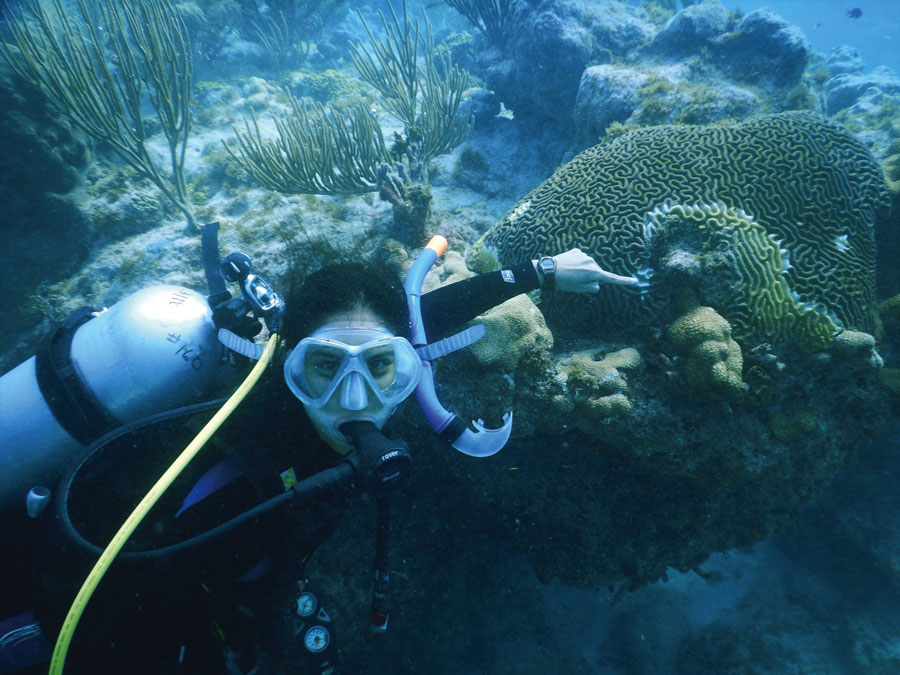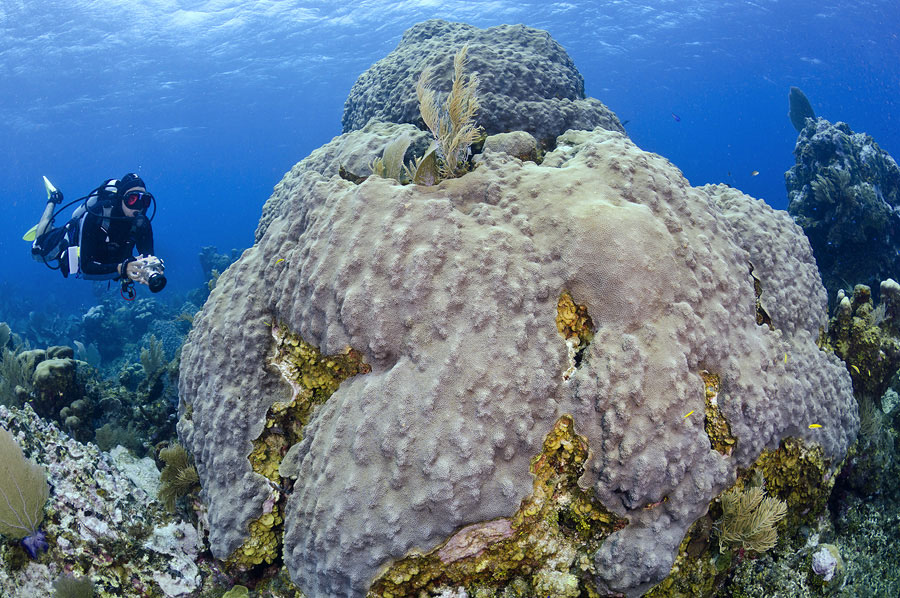Reef-building corals have faced unprecedented damage over the past century, primarily due to increasing human pressure on coral communities.
One of the most devastating challenges faced by Caribbean corals is the outbreak of stony coral tissue loss disease (SCTLD), which was first detected in Florida in 2014. Since then, it has rapidly spread to 26 countries in the wider Caribbean, causing severe impacts on susceptible coral reefs.
Our partners, Roatan Marine Park and Bay Islands Conservation Association, have been monitoring the progression of SCTLD in the Bay Islands of Honduras for 2 years. Here are some highlights of the efforts made in collaboration with the Bay Islands Technical Committee to mitigate its effects and raise awareness.
Monitoring and Analysis of the Spread
In January 2020, monitoring efforts to detect SCTLD commenced on the island of Roatan in Honduras, following its first report in Flowers Bay in September 2020. Utilizing the rover diver methodology (swimming over coral reefs for observation), presence-absence data were collected to track the disease’s progression. Over a period of 13 months, SCTLD spread across the Bay Islands, affecting at least 28 stony coral species.
Roatan and Utila were the most impacted islands, with the disease encircling them rapidly at a rate of approximately 155 m/day. Geographical patterns also emerged, with faster disease progression observed on the windward side of Roatan compared to the leeward side.

Understanding the Spread of SCTLD
While we don’t yet know the exact causes of SCTLD, a variety of natural and human-driven factors are believed to play a part in its spread.
On the natural side, thermal stress and ocean currents seem to be correlated with SCTLD outbreaks. For instance, higher water temperatures and specific surface current conditions might be linked to disease outbreaks.
On the human side, activities such as tourism, coastal development, and marine traffic may unintentionally help propagate SCTLD. Some theories point to ballast water and contaminated dive gear as possible carriers of the disease. High concentrations of dive centers and increased boat traffic in certain areas could exacerbate its spread.
Moreover, factors like poor water quality, sedimentation, and eutrophication – often consequences of human activities – can further stress corals, increasing the likelihood of SCTLD outbreaks. All of these factors underline the complex nature of SCTLD and the need for continued research to better understand and counter this disease.
Implications and Conservation Efforts
The rapid spread of SCTLD in the Bay Islands underscores the urgent need for conservation measures. The high dependency of these islands on healthy coral reefs for tourism highlights the importance of addressing the impacts of the disease.
Collaborative efforts between non-governmental organizations (NGOs), government agencies, and local businesses have been crucial in assessing the severity of the disease, mitigating its effects, and raising awareness for coral reef conservation.
Our most effective tools for monitoring and intervention against this devastating disease are local NGOs and our dedicated partners. Their intimate knowledge of the environment and unwavering commitment to its protection are invaluable. By harnessing this collaborative power, there is hope for coral reefs.
Dr. Antonella Rivera, CORAL’s Principal Investigator for the Western Caribbean
Lessons learned from the spread of SCTLD in Honduras can provide valuable insights for other Caribbean nations facing similar challenges.
What’s Next?
The rapid spread of stony coral tissue loss disease in the Honduran Bay Islands serves as a wake-up call for immediate action in coral reef conservation. To combat this devastating disease and protect the invaluable ecosystems it threatens, we must come together and take intentional action.

Here are two actionable ways you can contribute:
Read the New Publication
If you’re interested in delving deeper into the research and understanding the complexities of SCTLD and its spread in the Bay Islands, we invite you to read the full paper. It provides valuable insights into the disease and offers recommendations for effective disease prevention strategies.
Donate to Support Disease Prevention Science
Research and monitoring efforts are crucial for understanding and mitigating the impacts of SCTLD and other coral diseases. Your contribution can make a significant difference in supporting ongoing scientific studies, fieldwork, and conservation initiatives aimed at preventing the spread of coral diseases. Join us in safeguarding the health of our coral reefs for future generations. [And please visit and support our partners: Roatan Marine Park and BICA]
By taking action today, we can work together to protect these fragile ecosystems, preserve biodiversity, and ensure the long-term sustainability of our planet’s coral reefs.

